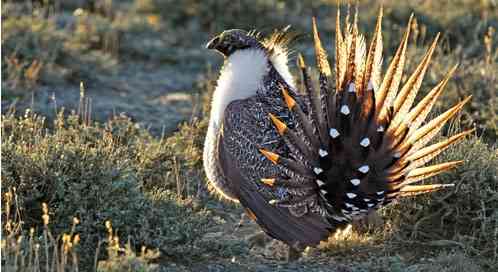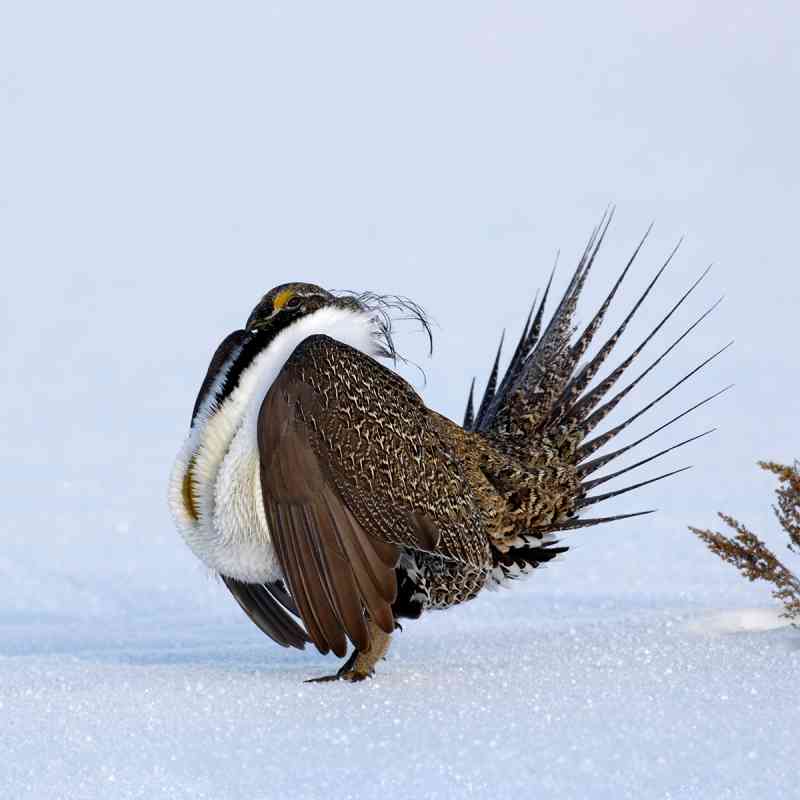Reducing ranching hazards in the sagebrush sea
East-central Montana is a beautiful but brutal landscape in December. Wind whips and snow drifts across the rugged, open scrublands. In this harsh climate lives the sage-grouse, a plucky bird that once thrived across the sagebrush sea. Today, however, the population is plummeting from habitat loss.
Livestock grazing occurs on large swaths of the sagebrush steppe that these birds need for mating, breeding and feeding. Livestock fencing can stretch for miles and be particularly dangerous to grouse. “Sage-grouse are low-flying birds without the best eyesight,” says Kylie Paul, Defenders’ Rockies and Plains representative. “That makes wire fences on farms and ranches near sage-grouse breeding and nesting habitat and wintering areas especially hazardous to the birds. They are often the cause of fatal collisions.”
The U.S. Fish and Wildlife Service determined in 2010 that sage-grouse warrant protection under the Endangered Species Act, but a final decision isn’t expected until 2016. In the meantime, Defenders is exploring ways to reduce the threats. One option is clipping markers onto the wire strands to help sage-grouse better see the fences. Field research in Wyoming found that marking fences reduced sage-grouse mortality by 61 percent between 2007 and 2009. Another study conducted in Idaho in 2010 found an 83 percent reduction in collision rates at marked fences versus unmarked fences.
So, for the sake of the birds, Paul and Mark Salvo, Defenders’ director of federal lands conservation and resident grouse expert, along with partners from the Natural Resources Conservation Service, spent a few blustery days braving the December cold on a Montana ranch near Winifred.
Here they “flagged” miles of fencing on a willing rancher’s property—clipping vinyl tags to the wire fence at three- to four-foot intervals. “We’d like to use this ranch to demonstrate how such a simple task can have a big impact toward safeguarding sage-grouse,” says Paul.
Fence flagging is one step that landowners can take to help save sage-grouse. Defenders also encourages ranchers to take advantage of federal programs that help landowners to protect and restore meadows and riparian habitat and to place conservation easements on important sage-grouse habitat.
“We hope that once ranchers and farmers see that small actions can have a positive impact on species conservation, they will join the conservation effort and help us preserve sage-grouse and other at-risk species—like bison and wolves—in the West,” says Salvo.
–Courtney Sexton
Only select articles from Defenders are available online. To receive 4 issues annually of the full award-winning magazine, become a member of Defenders of Wildlife!
Related


